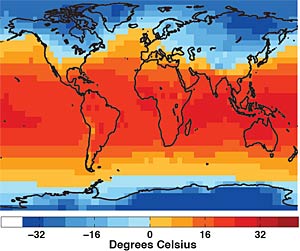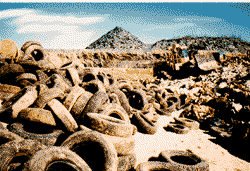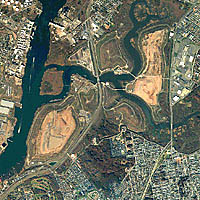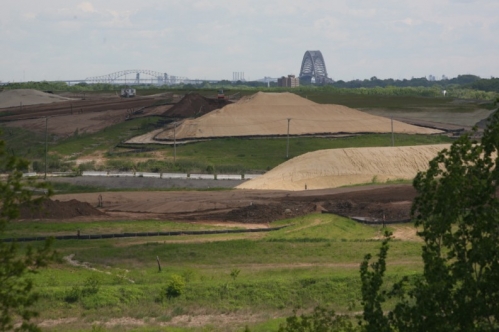See Dyson was a poseur. If you remember all of his stuff outside of his “specialty” of physics was as A Purposeful Heretic. A better name for it would have been obstreperous old penis….He demanded more “biological data” but he never once did any biological field work. He was originally worried about global warming. Wonder what changed his mind? Could it have been his work on JASON?
http://www.fas.org/irp/agency/dod/jason/
JASON Defense Advisory Panel Reports
JASON is an independent scientific advisory group that provides consulting services to the U.S. government on matters of defense science and technology. It was established in 1960.
JASON typically performs most of its work during an annual summer study, and has conducted studies under contract to the Department of Defense (frequently DARPA and the U.S. Navy), the Department of Energy, the U.S. Intelligence Community, and the FBI. Approximately half of the resulting JASON reports are unclassified.
A selection of recent JASON studies is offered below.
-
High Frequency Gravitational Waves, JSR-08-506, October 2008
- JASON was asked by staff at the National MASINT Committee of ODNI to evaluate the scientific, technological, and national security significance of high frequency gravitational waves (HFGW). Our main conclusions are that the proposed applications of the science of HFGW are fundamentally wrong; that there can be no security threat; and that independent scientific and technical vetting of such hypothetical threats is generally necessary.
-
Human Performance, JSR-07-625, March 2008
- The tasking for this study was to evaluate the potential for adversaries to exploit advances in Human Performance Modification, and thus create a threat to national security. In making this assessment, we were asked to evaluate long-term scenarios. We have thus considered the present state of the art in pharmaceutical intervention in cognition and in brain-computer interfaces, and considered how possible future developments might proceed and be used by adversaries.
-
Wind Farms and Radar, JSR-08-125, January 2008
- JASON was asked by the Department of Homeland Security (DHS) to review the current status of the conflict between the ever-growing number of wind-turbine farms and air-security radars that are located within some tens of miles of a turbine farm.
:}
Could it be the high flying polluting US Air Force had a hand in Mr. Dyson’s transformation? The study, Wind Farms and Radar, though I can’t reproduce it here, had Dyson as one of it’s main investigators and Paul Horowitz as another. Michael Brenner was the lead investigator. The neocons were after wind power.
:}
http://en.wikipedia.org/wiki/JASON
This article is about the US defense advisory group. For other uses, see Jason (disambiguation). For the data serialization format, see JSON.
JASON is an independent group of scientists which advises the United States Government on matters of science and technology. The group was first created as a way to get a younger generation of scientists — that is, not the older Los Alamos and MIT Radiation Laboratory alumni — involved in advising the government. It was established in 1960 and has somewhere between 30 and 60 members.
For administrative purposes, JASON’s activities are run through the MITRE Corporation, a non-profit corporation in McLean, Virginia, which contracts with the Defense Department.
JASON typically performs most of its work during an annual summer study. Its sponsors include the Department of Defense (frequently DARPA and the United States Navy), the Department of Energy, and the U.S. intelligence community. Most of the resulting JASON reports are classified.
The name “JASON” is sometimes explained as an acronym, standing either for “July-August-September-October-November”, the months in which the group would typically meet; or, tongue in cheek, for “Junior Achiever, Somewhat Older Now”. However, neither explanation is correct; in fact, the name is not an acronym at all. It is a reference to Jason, a character from Greek mythology. The wife of one of the founders (Mildred Goldberger [1]) thought the name given by the defense department, Project Sunrise, was unimaginative and suggested the group be named for a hero and his search.
JASON studies have included a now-mothballed system for communicating with submarines using extremely long radio waves (Project Seafarer, Project Sanguine); an astronomical technique for overcoming the atmosphere’s distortion (Adaptive optics); the many problems of missile defense; technologies for verifying compliance with treaties banning nuclear tests; a 1982 report predicting CO2-driven global warming; and, most controversially, a system of computer-linked sensors developed during the Vietnam War which became the precursor to the modern electronic battlefield.
:}
Anyway Data and Field Research always will out in the end:
Arctic meltdown is a threat to humanity
- 25 March 2009 by Fred Pearce
I AM shocked, truly shocked,” says Katey Walter, an ecologist at the University of Alaska in Fairbanks. “I was in Siberia a few weeks ago, and I am now just back in from the field in Alaska. The permafrost is melting fast all over the Arctic, lakes are forming everywhere and methane is bubbling up out of them.”
The permafrost is melting fast all over the Arctic, lakes are forming everywhere and methane is bubbling out of them
Back in 2006, in a paper in Nature, Walter warned that as the permafrost in Siberia melted, growing methane emissions could accelerate climate change. But even she was not expecting such a rapid change. “Lakes in Siberia are five times bigger than when I measured them in 2006. It’s unprecedented. This is a global event now, and the inertia for more permafrost melt is increasing.”
No summer ice
The dramatic changes in the Arctic Ocean have often been in the news in the past two years. There has been a huge increase in the amount of sea ice melting each summer, and some are now predicting that as early as 2030 there will be no summer ice in the Arctic at all.
Discussions about the consequences of the vanishing ice usually focus either on the opening up of new frontiers for shipping and mineral exploitation, or on the plight of polar bears, which rely on sea ice for hunting. The bigger picture has got much less attention: a warmer Arctic will change the entire planet, and some of the potential consequences are nothing short of catastrophic.
Changes in ocean currents, for instance, could disrupt the Asian monsoon, and nearly two billion people rely on those rains to grow their food. As if that wasn’t bad enough, it is also possible that positive feedback from the release of methane from melting permafrost could lead to runaway warming……
…….Locked away
The real worry, though, is that permafrost contains organic carbon in the form of long-dead plants and animals. Some of it, including the odd mammoth, has remained frozen for tens of thousands of years. When the permafrost melts, much of this carbon is likely to be released into the atmosphere.
No one knows for sure how much carbon is locked away in permafrost, but it seems there is much more than we thought. An international study headed by Edward Schuur of the University of Florida last year doubled previous estimates of the carbon content of permafrost to about 1600 billion tonnes – roughly a third of all the carbon in the world’s soils and twice as much as is in the atmosphere……
……….Potent greenhouse gas
What’s more, if summer melting depth exceeds the winter refreezing level then a layer of permanently unfrozen soil known as a talik forms, sandwiched between the permafrost below and the winter-freezing surface layer. “A talik allows heat to build more quickly in the soil, hastening the long-term thaw of permafrost,” says Lawrence.
The carbon in melting permafrost can enter the atmosphere either as carbon dioxide or methane, which is a far more potent greenhouse gas, molecule-for-molecule. If organic matter decomposes in the low-oxygen conditions typical of the boggy soils and lakes in these regions, more methane forms.
Researchers have been monitoring the Stordalen mire in northern Sweden for decades. The permafrost there is melting fast and, as conditions become wetter, it is releasing ever more methane into the air, says Torben Christensen of Lund University in Sweden. This is the future for most of the northern hemisphere’s permafrost, he says.
:}
Please read more but caution is required. It could make you ill.


 Febuary
Febuary




